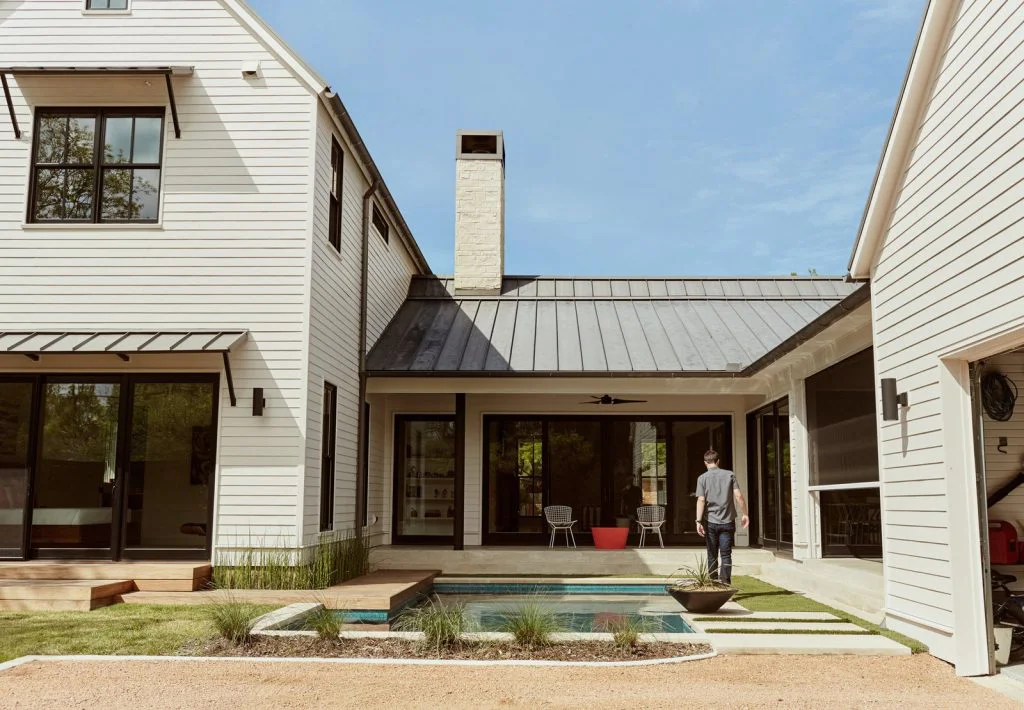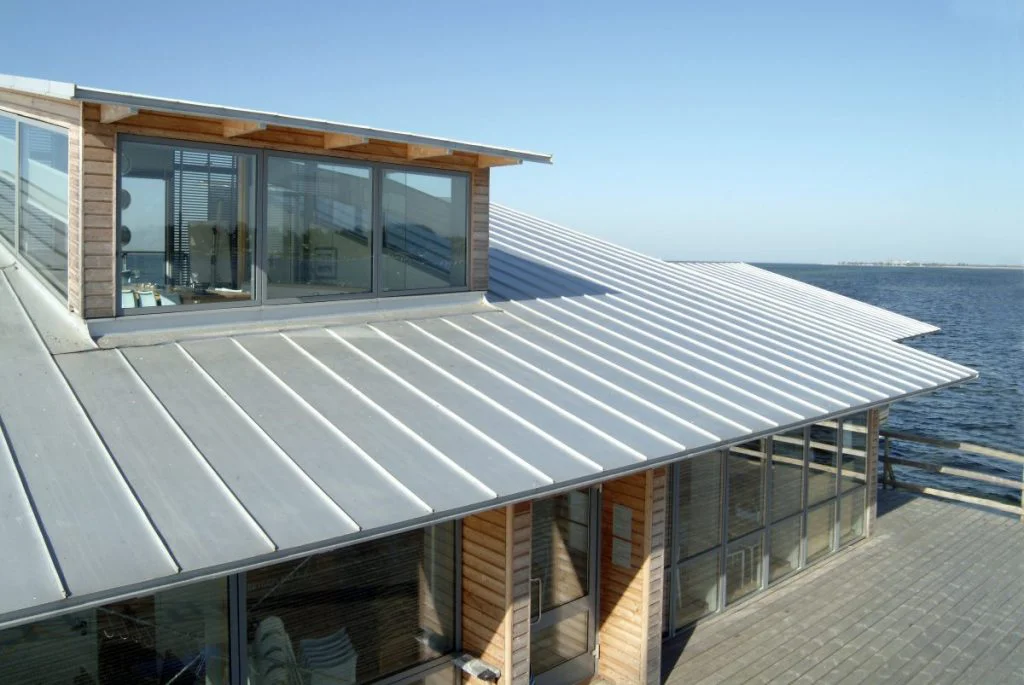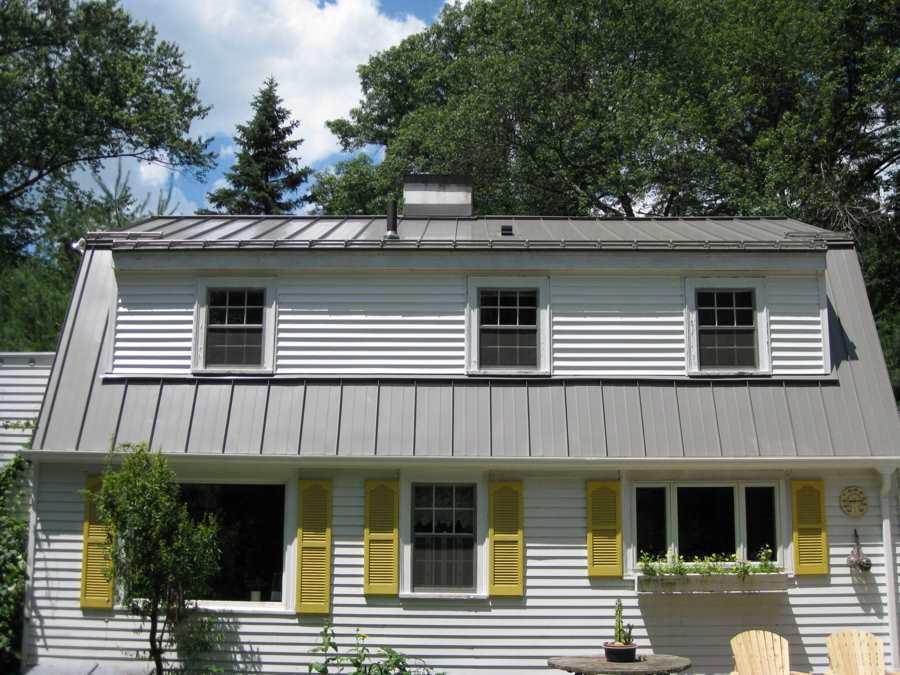The popularity of metal roofs has continued to increase in the global market. However, most people only think about steel roofing whenever this phrase crosses their minds. One thing you need to understand is that there are several residential metal roofing types in the market. Choosing the right roofing materials is among the most critical decisions that you have to make in the initial stages of looking for a home.
The direction you take mainly depends on your location. You also have to identify the metal roofing pros and cons before you decide on the right ones. You need to benefit from the strengths of the metal roof and live with its weak points for a long period. Let us evaluate some of the various residential metal roofing types and the strengths and weaknesses of each to help you make an informed buying decision.
Pros and Cons of Copper Metal Roofing
We can say that copper roofing is the granddad of all metal roofs because it has been under use for several centuries all over the world. Copper is extremely long-lasting and can last for more than 200 years in ideal environments. Copper is an excellent roofing material if you are looking for the best green options because they are 100 percent recyclable.
The copper metal is extremely soft and hence it is one of the quietest residential metal roofing types. However, modern installation now requires all the metal roofs to have appropriate substrates that will minimize noise from either hail or rain. The main challenge of copper as a soft material is that it can easily get damaged in hail-prone regions. Hailstones can course dents on this metal. Denting will reduce the aesthetic value of copper but it is better than some of the hard metals that will puncture and not dent due to hailstones. Copper roofing materials can be very expensive depending on your ability to pay. The other challenge with copper roofs is that they have the ability to contract or expand with changes in temperature. However, you can control this with proper shingle or panel but you need to be keen as you choose copper as a roofing material in your home.
Pros and Cons of Aluminum Metal Roofing
Aluminum is one of the best material for roofing materials because of its corrosive durability and strength. Most professionals recommend the use of aluminum roofs in coastal climates. The primary reason is that aluminum has a high resistance to salt corrosion in comparison to the other types of metallic roofs. Even though aluminum is not affected by corrosion, the truth of the matter is that this is a highly active metal and reacts to atmospheric conditions almost instantly. However, this rapid reaction also offers protection to this material. The external layer of aluminum will react with the oxygen that is in the environment to create an aluminum oxide layer and this effectively seals the inner layers from further corrosion. The process is similar to A606 weathering steel process but it is faster and provides longer protection. Most people apply a painted coating on aluminum because its natural patina is not believed to be aesthetically pleasing over time.
Cost is an important factor when choosing the best residential metal roofing types. Like copper, the main drawback of aluminum comes with the costing. Even though this material gives you a higher protection against corrosion, it is costlier than similar solutions that have an aluminum coating application. However, the pricing of aluminum metal roofing fluctuates depending on the prevailing market conditions. Most people use aluminum in a much thinner application than steel because of its cost.
The strength to weight ratio of aluminum is higher than steel but the cost makes manufacturers make panels that are quite thin for their environment. This roofing material may not be the best when dealing in areas that have strong environmental stresses like hail and high winds as this can damage it. Therefore, it is good to identify the environmental strains that the aluminum roof is going to face before making the right decision.
Pros and Cons of Zinc Metal Roofing
Zinc is an extremely durable and dependable roofing material that can withstand and conditions. Have you been asking yourself how long does a metal roof last? One thing that makes zinc an amazing metal is the fact that it uses its own patina for healing its scratches over time and thus can remain string for more than 100 years. Zinc has natural properties that make it the best option for working on both commercial and residential projects. Zinc has an ability to be manipulated and formed in any shape with a lot of ease. Chalking of zinc with time is not one of the most appealing elements in this metal but you can clean and control it to some extent.
Zinc can be taken to be the greenest metal on the market. Its melting point is lower than any other type of roofing metals. This means that you need up to 25 percent of copper and steel processing energy to process zinc. Also, zinc is 100 percent recyclable and readily available in local markets. The implication is that zinc in greener than even steel and copper.
From an aesthetic point of view, the main challenge of zinc roofing material is its chalking effect. The price of zinc is also high and you need a professional to install it properly. Zinc is like other bare metals and patinas into a grey or blue appearance if it is not painted. This may end up leaving a chalk residue along regions in which water flows. Zinc is a soft metal and hence high winds and hail can destroy the shingle design or panels with a lot of ease.
Pros and Cons of Steel Metal Roofing
Steel is an alloy material that is manufactured from iron among other elements. Steel can be used in all building aspects and the material remains the most common commercial and residential metal roofing types. The initial manufacturing of steel is highly energy intensive compared to other metals like zinc. However, the material has a high level of recyclability and most of the steel we use today come from recycled and not new materials. Therefore, the steel material is incredibly green because it is the most recycled material on the earth.
The other advantage of steel is that it is the least expensive material in comparison to other metals like copper, zinc, and aluminum. There are three main types of zinc metal roofing materials and this includes weathering steel, Galvalume, and Galvanized.
Weathering steel is the type of steel that was initially designed for utilization in heavy steel industries such as bridge construction. The design of the outer layer of steel is intentionally made to rust but this protects its inner layer. As a result, weathering steel roofs work in the same manner as aluminum while in the patina process. However, the process takes a longer process in comparison to the aluminum roofing material. You have to remember that weathering steel does not rust intentionally. The material is not designed for use as a structural solution of steel roofing. Most constructors use it in accent roofs and with the clear understanding of this rusting process, the material requires regular maintenance.
Galvanized steel is manufactured from a layer of zinc so as to protect the inner steel layer from corrosion. This, in turn, slows down the corrosion process and protects the steel’s inner layer. It is the most common form of steel roofing materials.
Galvalume steel resembles galvanized only that it uses a combination of a zinc and aluminum coating. The aluminum offers better protection against corrosion is particular environments than galvanized. It also delivers a smoother and smaller spangle for a more uniform appearance. Galvalume offers better protection to the surface than galvanized because of the presence of aluminum but it is more vulnerable to cut edges and scratches.
Steel roofing has gone through several transformations in the last 50 years and you can now make it resemble zinc and copper among other expensive materials. Its achieved through painting and the painted solutions are made to resemble zinc, copper or weathered steel. The solution comes with long warranties and deliver an excellent option for restorations and remodels.
The primary advantages of steel are the cost and flexibility of use. Steel is the main roofing solution in most homes because of the higher prices that are associated with the other materials. These trends are likely to continue in the future. Zinc is highly recyclable and easily accessible making it one of the best green solutions. Steel is among the hardest metals you can find in the market and you can use it in almost all environments. The roof can also work well in high winds and hail. Its very common in mountainous regions that have high volumes of snow. It's also good for areas that are prone to hail. It is very flexible as a residential and commercial roofing option. Its one of the best roofing solutions because of the low cost, high durability, and diverse range of uses.
Pros and Cons of Tin Roofing
Most enthusiasts around the United States and in Canada often request for Tin roofing. Some people use this term interchangeably with galvanized steel, steel roofing, and metal roofing. Tin is a rare metal that is not commonly used for roofing. It is an element like zinc and copper. It was initially introduced in the market as a canning material and rural DIYers adapted it by flattening out and used it as shingles when other materials were unavailable.
Later on, aluminum became the standard of containers and replaced tin and its use as a DIY construction material increased. The term tin roofing basically refers to galvanized aluminum or steel material. Tin has several uses in science and technology but its rarely used as a roofing material.
Conclusion
Each of these residential metal roofing types have their pros and cons but the choice will normally come down to the cost at the end of the day. No wonder you may find people asking questions like is a metal roof cheaper than shingles while making this decision. Copper is the most beautiful but most expensive material. Zinc is the greenest of all these options because it has a low melting point but it’s also quite costly. Aluminum is more ideal in coastal regions and costs less than zinc and copper. Steel is the widely used and inexpensive building material. There are various types of steel and you need to know the one that will give you the best service.
Each of these metals has its strength and weaknesses. You need to understand all these metal roofing pros and cons to be able to make an informed decision. The climatic conditions of your region also play an important role in determining the best roofing type. It's also wise to seek the advice of a professional while choosing the roofing material for your home or premise.





